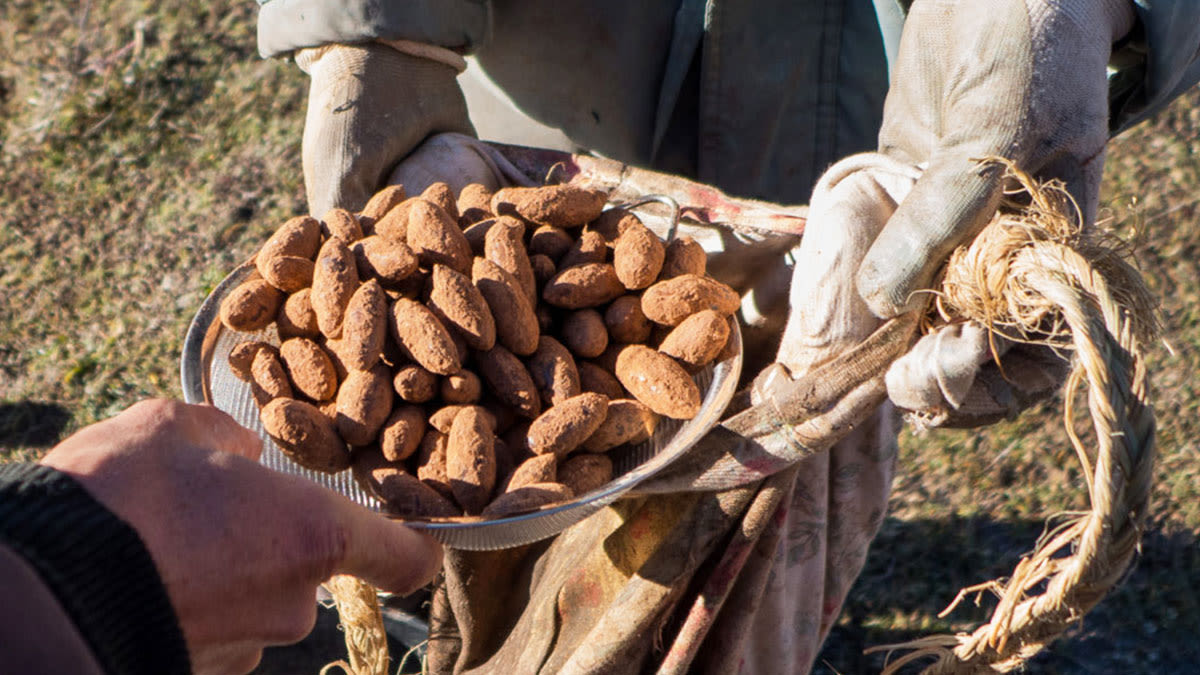A tree planting drone to re-green the world
The Dronecoria team wants to re-green the world.
“We want to make large scale restorations affordable with UAV sowing, dramatically reducing the costs of traditional reforestations,” explains Lot Amorós.
Armed with a specially-designed, low-cost drone, the team has a plan: “By reducing the costs of reforestations, we would like to scale ecological restoration worldwide, making these efforts bigger, more frequent and resilient, and more accessible to governments, companies and organizations,” says Amorós.
Based in Spain, Amorós is a computer engineer and leader of the Dronecoria team. He is joined by Jesus Ledesma, a forest engineer and conservationist, and Salva Serrano, an architect and landscape designer, and a team of volunteers. The team shares their expertise developing tools to boost forest restoration and fight the climate crisis.
Three steps to a greener world
The Dronecoria team have set themselves a massive task as a pilot project: sowing 100,000 trees in a Spanish national park.
But a single forest can’t reverse the climate crisis.
“Dronecoria represents a new symbiotic response to the climate crisis,” explains Amorós. “Combining biological and technological processes unlocks the potential impact of interaction between ecologies and robotic systems on critical environments. This approach borrows from cybernetics, robotics and permaculture, allowing the accurate positioning of each new seedling, increasing their survival.”
The Dronecoria team has broken down the task into three broad steps, which can be replicated by anyone anywhere in the world with the proper materials, and access to some basic tools and the internet.
2. Determining exactly where to plant with photogrammetry
3. Sowing seeds by drone
1. Helping every seed survive
Trees can take several seasons to establish. To ensure Dronecoria’s efforts lead to as many trees as possible, first the seeds are cleaned and coated with a special mix of nutrients to protect the seed from weather and wildlife.
The team have figured out a lower-tech, replicable process which uses accessible equipment - like a cement mixer.
The coated seeds are also perfectly round, which makes them easy to plant by drone.
How can planting trees help the climate?
“Climate change is produced by an excess of carbon in the atmosphere, and planting trees is the best solution for mitigation via carbon sequestration,” says Amorós. The trees chosen for the experiment - Pinus nigra - are fast-growing, and common to the region.
Currently, forests and soil sequester around 30% of total carbon emissions, and each tree can absorb a ton of carbon in its lifetime¹. However, more than 7 million hectares of forest is lost every year.
Reversing this trend and planting more trees can help the climate. But it’s a massive undertaking. To reduce atmospheric carbon by 25%, we would need to plant 500,000,000,000 trees - that’s half a trillion. And that would only ‘roll back’ the carbon clock by 20 years. Planting trees is an important part of our climate response, but other efforts - including preventing forest loss and regrowing other carbon sinks - are needed too.
2. Planting in the right place
Preparing the seeds is just the first step. Next, is selecting the right place to plant.
The team settled on the Spanish National Park of Sierra de Maria-Los Velez. “The test area used to be a forest hundreds of years ago, but after years of intensive logging and extensive agriculture, it has become arid and has few trees,” says Amorós. “At 1,600 meters above sea level, it has extreme conditions - very hot in summer and below freezing in winter, so any kind of natural shelter will dramatically increase the efficiency of reforestation efforts,” continues Amorós.
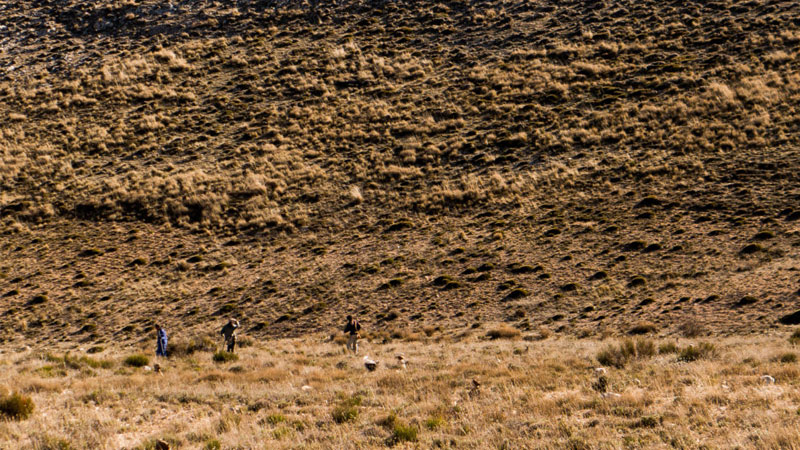
The key is seeking out microclimates which can act as nurseries for the seedlings. Native plants already growing on the project area, such as dog rose and wild thyme, can protect the seeds from the worst weather conditions - and are easy to identify by drone. Studies indicate that planting in the right place can increase survival as much as 6.2 times more than in places without the shelter of a native plant.
“Aerial photography is an efficient technique to identify and locate places that will act as a ‘nursery’ to protect the coated seeds,” says Amorós. For this, the team used Pix4Dmapper.
Project details: Reforestation with drones
| Team | Dronecoria |
| Location | Sierra de Maria-Los Velez National Park, Spain |
| Hardware | DJI Mavic Pro 2 (mapping) Dronecoria (seeding) |
| Software | Pix4Dcapture Pix4Dmapper photogrammetry software Qgroundcontrol |
| Area | 20 hectares (survey) 4 hectares (planted) |
| Seeds | 100,000 Pinus nigra |
| Projected new forest | 10,000 trees |
Using a DJI Mavic Pro 2 drone and Pix4Dcapture, the team mapped 20 hectares to get an overview of the area.
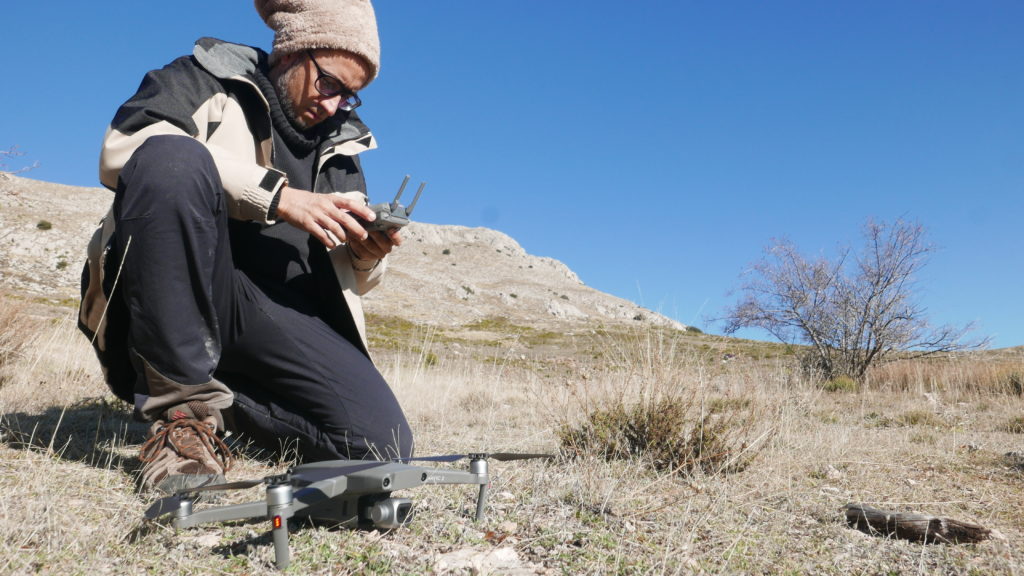
The data was processed in Pix4Dmapper. “With the orthomosaic and the textured point cloud we will use the automatic classification tool to locate the best spots to plant,” says Amorós.
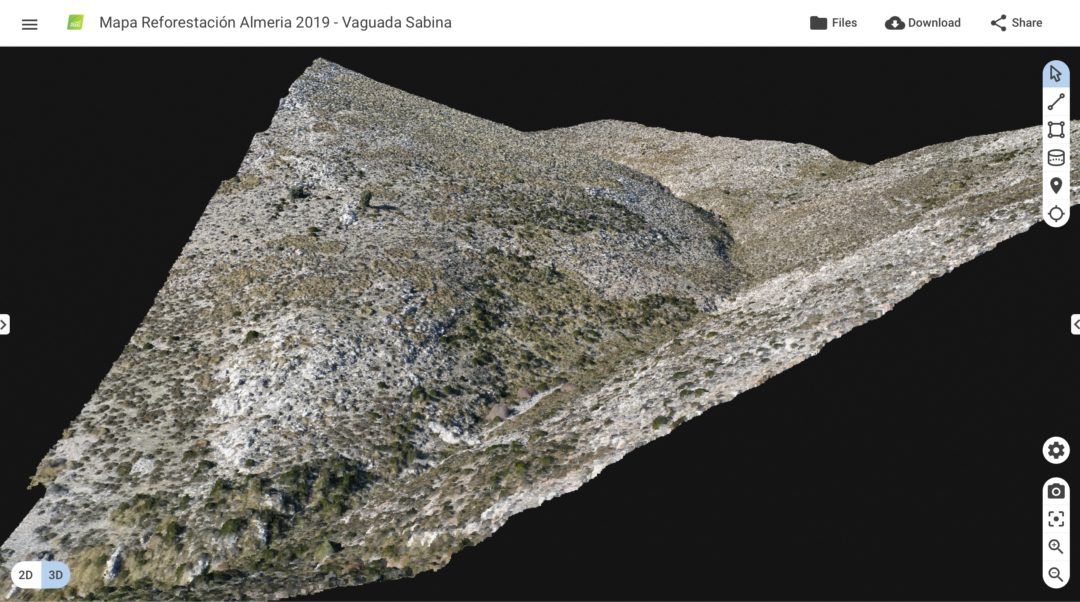
Pix4Dmapper’s automatic classification tool uses machine learning technology to detect elements of a project: from buildings and human-made objects to scrub and flat ground.
The team sees the potential to go even further. “We could create a map of shadows to determine places with potentially more moisture, or eliminate the sloped areas to prevent the run off of seeds,” says Amorós. With these variables in mind, the best four hectares were selected to sow the seeds.
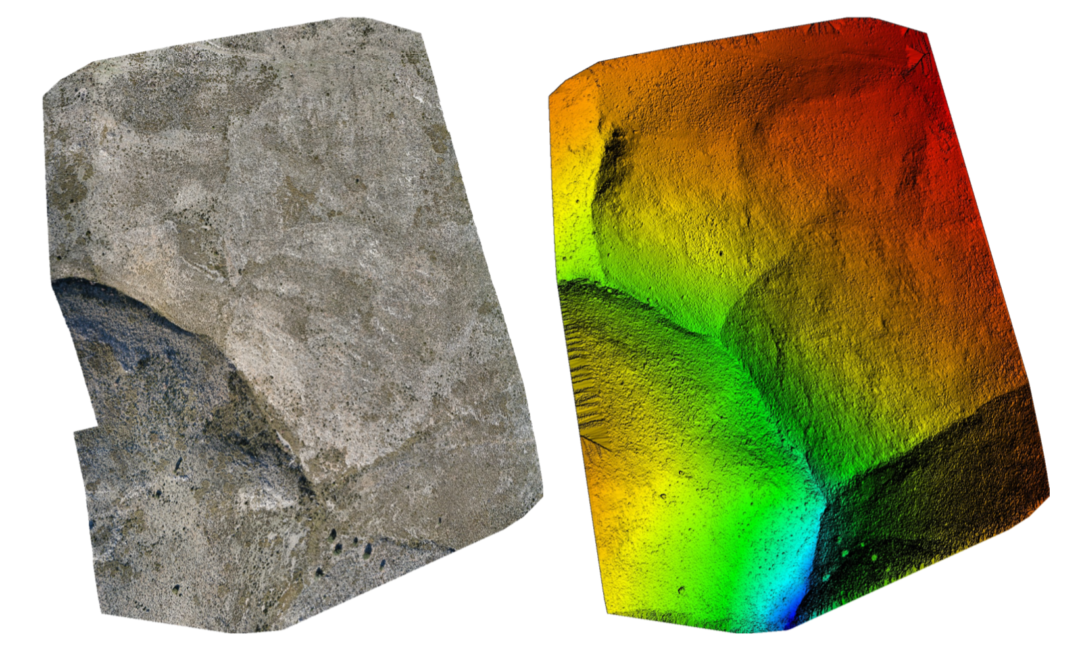
Detecting the best spot to plant is essential. Amorós explains: “From previous experiments, we expect a minimum survival rate between 5% and 10%. We will sow up to 100,000 seeds, so with that estimated survival percentage, we can expect to see between 5,000 and 10,000 new trees.”
3. From camera drone to tree planting drone
After identifying the ideal spots to sow new trees, the team will create a KML file to load into the open source Qgroundcontrol software and upload to the sowing drone, ready for the upcoming growing season.
This process isn’t so different from the variable rate application technique used by digital agriculturists around the world.
Meet the Dronecoria tree planting drone
Most drones can be used in most situations. The Dronecoria drone is specifically designed for one thing: low-cost reforestation.
The open-source design is laser-cut from plywood and can be assembled in a few hours with 3D printed components and a recycled water bottle.
The hexacopter design means the Dronecoria stays stable in flight, and the 8-kilo drone can lift as much as 10 kilos of seeds. In a 10 minute flight time, Dronecoria can cover a hectare and distribute up to half a million seeds.
Both the hardware and software are freely available, and the Dronecoria team invites everyone to make their own.
As soon as the weather is right, the Dronecoria drone is ready for takeoff with its payload of 100,000 seeds.
It’s taken the small team months to get to this point, but the flight will take as little as 10 minutes.
This is by design: the Dronecoria team wants this process to be scalable. Their goal is to make it available to any organization. This can help a range of organizations to scale, deploy, and improve reforestations efforts.
“Typical tree planting efforts are labor intensive and take a long time,” explains Amorós. “With this process, seeds can be sown at a low cost, making reforestation faster than ever.”
With Pix4D's Climate Contest grant, the team will be able to take the project further, and sow even more seeds.
| ¹ Planting Trees to Help Mitigate Climate Change, NASA | Back to article |
